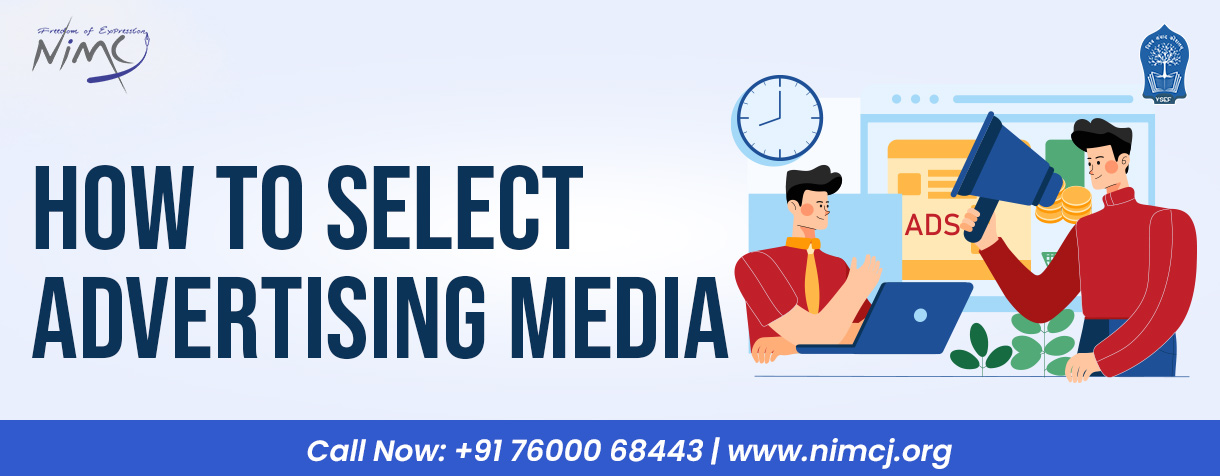How to Select Advertising Media

Selecting the right advertising media is essential to achieving impactful results in marketing. The choice of media influences brand reach, engagement, and return on investment (ROI). Let’s get into various advertising media types, factors influencing media selection, and how to develop a strategic media plan that aligns with business goals.
Types of Advertising Media
Selecting the right media requires understanding various advertising formats, each suited to different audiences and purposes. Here’s a breakdown of the primary types of advertising media:
- Print Media: This traditional medium includes newspapers, magazines, trade journals, and periodicals. It is effective for detailed information and credibility, reaching readers who seek in-depth, trusted content.
- Direct Mail: Direct mail includes catalogues, pamphlets, brochures, and sales letters. This method allows personalized communication with a targeted audience, ideal for promotional offers and direct calls to action.
- Transit Advertising: Transit ads appear on public transport like buses, taxis, trains, and auto-rickshaws. These ads provide repeated exposure to a broad audience, making them effective for high-frequency urban visibility.
- Broadcast Media: Broadcast options, including radio, television, films, and internet streaming, are impactful for visual and auditory engagement. They are highly effective for brand awareness, product demonstrations, and reaching both local and mass audiences.
- Outdoor or Mural Advertising: This includes posters, billboards, and sky advertising. Outdoor media reach people in high-traffic areas and offer continuous brand exposure, especially in urban environments.
- Other Forms: This category encompasses creative forms of advertising like window displays, trade fair exhibitions, point-of-purchase displays, and promotional items (e.g., calendars, diaries, and branded pens). These methods enhance brand visibility and engagement at the point of sale or within specific target events.
Factors Affecting the Selection of Advertising Media
Choosing the ideal media depends on several key factors:
- Company Objectives: The media choice should align with specific goals, such as boosting brand recognition, driving sales, or introducing a new product.
- Product Nature: The nature of the product often dictates the type of media. Visual products benefit from television and digital media, while detail-oriented products, like financial services, may prefer print or informative digital ads.
- Target Audience: The audience’s age, income, interests, and location play a crucial role. For example, digital media is optimal for targeting a younger demographic, while print may appeal to an older, established audience.
- Budget Constraints: Cost is a fundamental consideration. While TV and digital platforms can be costly, radio and print often provide budget-friendly alternatives, especially for localized campaigns.
- Reach and Coverage: Broad coverage is necessary for national campaigns, where television and digital channels excel, while local businesses may benefit more from targeted local newspapers or radio ads.
- Media Credibility: Print media and established news platforms hold high credibility, which is valuable for industries like healthcare and finance. Digital media can also foster credibility when advertising through trusted sites or influencers.
- Frequency and Timing: Repetition and timing are crucial, especially for product launches or seasonal campaigns. Digital ads allow for flexible timing, while TV and radio require pre-booked slots.
- Content Requirements: Visual-centric media, such as TV and social media, are ideal for products needing visual demonstrations, while detailed products may perform better in print or digital text.
Steps to Choose the Right Advertising Media
- Define the Target Audience: Conduct thorough audience research, focusing on demographic, psychographic, and geographic details.
- Set Clear Objectives: Identify the primary goal—whether to drive awareness, engagement, or conversions. This goal should inform the media choice and messaging strategy.
- Evaluate Budget and Cost Effectiveness: Ensure the chosen media maximizes the reach and impact within your budget constraints, with a focus on cost-effective channels.
- Assess Performance Metrics: Use performance data from past campaigns and industry benchmarks. Digital platforms, in particular, offer extensive metrics, such as click-through rates, engagement, and conversion data.
- Test and Adjust: For digital media, consider running A/B tests to determine which platforms and content resonate most with your audience. Adjust the media plan based on these results.
Conclusion
Selecting the right advertising media is essential for successful marketing outcomes. By considering factors like target audience, budget, and campaign goals, businesses can optimize their media choices to enhance reach and engagement. If you're looking to deepen your understanding of media planning and selection, consider pursuing a course at NIMCJ, Ahmedabad. Our programs, including BAJMC and MAJMC, offer comprehensive training in advertising, media strategy, and journalism, preparing you for a successful career in mass communication.
Ready to dive into the world of advertising media? Explore our courses at NIMCJ and start your journey toward mastering media and communication.
Inquire now for admission
13 Nov 2024
Post by : NIMCJ
